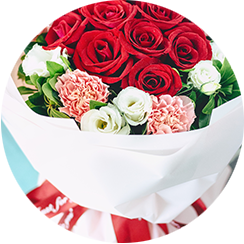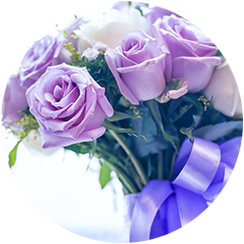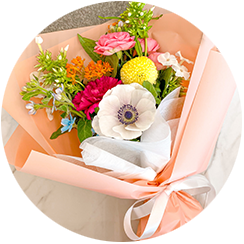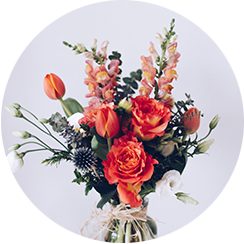Bloom with Joy: Discover How Flowers Can Brighten Your Mood
Posted on 20/05/2025
Bloom with Joy: Discover How Flowers Can Brighten Your Mood
Flowers have been a symbol of joy, hope, and celebration across cultures for centuries. But did you know that the positive impact of blooming beauties goes far beyond their aesthetic appeal? Scientific research and ancient wisdom alike suggest that flowers truly have the power to elevate your mood. In this comprehensive guide, discover how you can let joy bloom in your life by integrating flowers -- whether in your home, workplace, or daily routine.
Why Do Flowers Brighten Our Mood? The Science Behind the Smiles
The sight and scent of flowers can instantly trigger positive emotions, and numerous studies back this up. Here's why flowers have such a profound effect on our emotional well-being:
- Color Therapy: Brightly colored blooms stimulate the brain and influence feelings of cheerfulness, calm, or energy through color psychology.
- Scent and Memory: Fragrant flowers can evoke pleasant memories and boost serotonin, the "feel-good" hormone.
- Natural Beauty: Visual exposure to nature, including flowers, has been linked to decreased anxiety and stress levels.
- Acts of Kindness: Receiving flowers makes people feel cared for and valued, enhancing social bonds and happiness.
According to a study published in Evolutionary Psychology, people who received flowers reported better moods and even reductions in depression. The act of simply looking at fresh flowers can significantly lift your spirits.

Top Mood-Boosting Flowers: Brighten Your Day with Nature's Best
Not all flowers are created equal when it comes to boosting your mood. Here are some of the best flowers to bring positivity and harmony into your life:
1. Sunflowers - The Symbol of Joy
Sunflowers are synonymous with sunshine and happiness. Their bright yellow petals instantly bring a smile and fill spaces with warmth. Place a vase of sunflowers in your room to awaken energy, optimism, and a sense of summer all year round.
2. Gerbera Daisies - The Cheerful Companion
With their vibrant hues -- from red to pink to orange -- Gerbera daisies are known to boost enthusiasm and bring playfulness to your environment.
3. Lavender - Nature's Calm
Lavender's scent is renowned for its relaxing and stress-relieving properties. Keep a bunch of fresh or dried lavender near your workspace or bedroom to lower anxiety and enhance a sense of calm.
4. Roses - The Touch of Love
Roses are a timeless expression of care. A bouquet of roses, regardless of color, signifies appreciation and has been shown to evoke feelings of happiness and love.
5. Orchids - The Exotic Energizer
Orchids symbolize beauty and strength. Their intricate blooms not only elevate interiors but also foster creativity and focus.
How Flowers Influence Mental and Emotional Well-Being
Let's dive deeper into how flowers contribute to emotional wellness. Their effects are more than just surface-level beauty:
- Stress Reduction: Regular exposure to fresh flowers lowers cortisol levels -- the hormone associated with stress.
- Enhanced Productivity: Workspaces adorned with plants and floral arrangements show higher employee satisfaction and focus.
- Improved Sleep: Calming flowers such as lavender and jasmine have properties that promote better sleep.
- Greater Mindfulness: Tending to plants and flowers encourages a state of mindfulness, a proven method to combat anxiety and depression.
In hospitals, floral displays have been shown to speed up recovery times. Patients enjoy not only a fresher environment but also emotional support through the living presence of flowers. The simple act of giving or receiving flowers to brighten your mood cannot be underestimated.
Incorporating Flowers Into Your Daily Life for a Happier Outlook
Want to bloom with joy every day? Here's how to incorporate flowers for mood enhancement into your routine:
1. Fresh Flowers in Your Home
From your kitchen table to your bedside stand, displaying fresh flowers is a visual reminder of beauty and life. Mix different types for a pop of color, or keep to a single favorite for simplicity.
2. Desk Decor for Productivity
Brighten up your workspace with a petite vase of blooms. Studies show that flowers at work encourage creative thinking and reduce fatigue.
3. Floral Self-Care Rituals
Infuse your self-care routine with the magic of flowers. Try a relaxing bath with rose petals, sip on chamomile or hibiscus tea, or meditate next to a potted orchid.
4. Gifting for Connection
Strengthen relationships by giving the gift of flowers. Whether it's for a birthday, a thank-you, or just because, the gesture fosters a sense of community and shared happiness.
5. Gardening for Joy
Plant and nurture a flower garden. Gardening not only connects you with nature but it's also a mindful activity offering a rewarding sense of accomplishment and natural stress relief.
The Power of Flower Colors: Choosing the Best Blooms for Your Mood
Color psychology plays a significant role in how flowers affect your mood. Each shade can evoke particular feelings:
- Yellow: Promotes happiness, optimism, and energy (e.g., sunflowers, yellow tulips).
- Red: Inspires passion, love, and vitality (e.g., roses, poppies).
- Purple: Symbolizes luxury and peace (e.g., lavender, lilacs).
- White: Brings tranquility, purity, and simplicity (e.g., lilies, daisies).
- Pink: Nurtures feelings of affection and gentleness (e.g., peonies, pink carnations).
Mixing and matching different colored blooms is a powerful way to cultivate the atmosphere you desire in any space.
Seasonal Blooms: Keeping Joy Alive All Year Round
One of the best ways to maintain a happy mood throughout the year is to celebrate each season's unique blooms:
- Spring: Tulips, daffodils, hyacinths, and cherry blossoms signal renewal and growth.
- Summer: Sunflowers, roses, zinnias, and dahlias offer vibrancy and abundance.
- Autumn: Chrysanthemums, marigolds, and asters bring warmth and richness.
- Winter: Amaryllis, poinsettias, winter jasmine, and evergreens bring cheerfulness to grey days.
By aligning your floral choices with the seasons, you'll always find a fresh sense of joy and inspiration indoors, no matter the weather outside.
Flower Therapy: Ancient Wisdom Meets Modern Science
The concept of flower therapy is not new. Ancient cultures regularly used flower essences and bouquets for healing and mood elevation. Modern science now echoes these traditions -- affirming that flowers improve your emotional health.
- Floratherapy is used today to aid relaxation and focus during meditative practices.
- Aromatherapy, which depends heavily on flower extracts and essential oils, is shown to reduce stress, improve sleep, and enhance emotional well-being.
- Simply spending time with flowers, whether through arranging, gifting, or gardening, has measurable impacts on happiness and quality of life.
Practical Tips: How to Make the Most of Flowers for Mood Enhancement
Ready to embrace the happiness that flowers can bring to your life? Follow these simple but powerful tips to maximize the mood-boosting effects of blooms:
- Choose flowers that resonate with you emotionally -- your preferences matter most!
- Change your arrangements regularly to keep your environment feeling fresh and new.
- Don't shy away from wildflowers or unusual varieties. They add character and spark curiosity.
- Use small arrangements in unexpected places, like your bathroom or near your entryway, for surprise bursts of joy.
- Combine flowers with leafy greens or ferns to bring more of nature indoors.
Remember, it's not about the cost or rarity of the flowers. Even a single daisy in a jar can uplift your mood!

Common Questions on Blooming with Joy: Flowers and Mood
Q1: How often should I replace fresh flowers?
Most fresh flowers last between 5-10 days. For continuous mood brightening, rotate your arrangements weekly with seasonal favorites.
Q2: Can artificial flowers brighten your mood too?
While nothing compares to the natural scent and vibrancy of fresh flowers, artificial blooms -- especially lifelike ones -- can still foster a positive atmosphere, especially when combined with scent diffusers or essential oils.
Q3: Is there a flower that helps with anxiety or stress the most?
Lavender is widely recognized for its anxiety-reducing effects. Jasmine, chamomile, and gardenia are also excellent choices for relaxation and stress relief.
Q4: What if I don't have a green thumb?
Low-maintenance flowers like succulents, anthurium, or even dried arrangements can offer the same mood-boosting benefits with minimal fuss. Plus, exploring flower delivery or local florists can bring regular doses of joy to your door.
Conclusion: Let Yourself Bloom with Joy Each Day
Flowers do far more than adorn your space -- they nurture the soul. Whether through the act of giving, receiving, displaying, or nurturing blooms, flowers can elevate your mood, reduce stress, and infuse your everyday life with joy.
As you surround yourself with nature's vibrant colors and scents, take a moment each day to pause, breathe in the beauty, and let your spirits rise. It's time to bloom with joy -- and savor how flowers can truly transform your mood and your life.
If you found this guide inspiring, share it with friends or start your own flower ritual today. Discover the happiness of blooming with joy -- one beautiful flower at a time!
Latest Posts
Identify Which Flower Symbolizes Your Personality Best
Thrive in Blooms with Our 12 Long-Lasting Picks
3 Foolproof Methods to Preserve Your Beautiful Flowers





